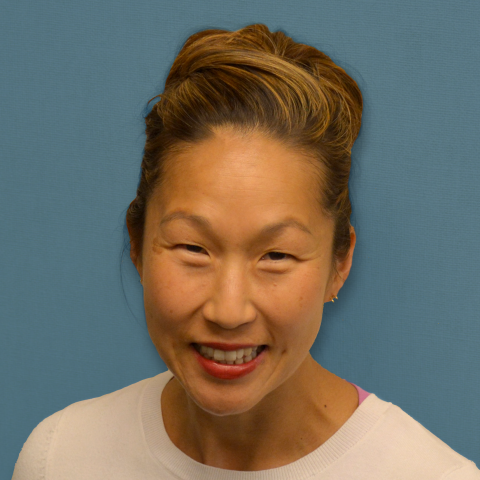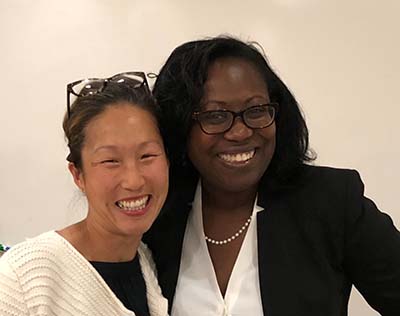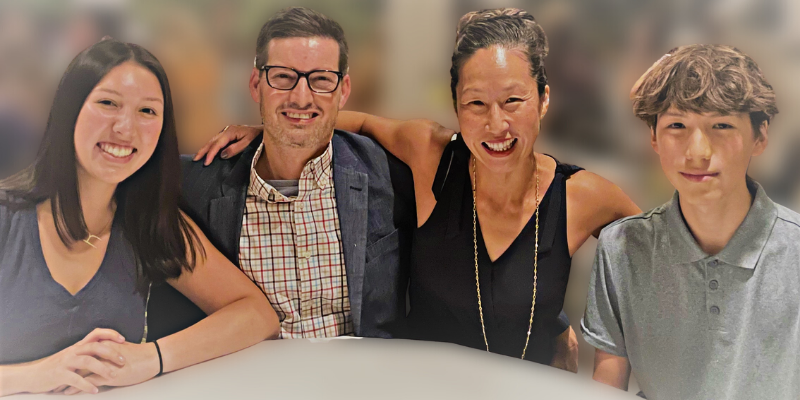NICHQ Employee Spotlight: Kim Sprunck
 Full name and title: Kim Sprunck, MSW, MPH, Associate Director of Programs
Full name and title: Kim Sprunck, MSW, MPH, Associate Director of Programs
Years with NICHQ: 3
How has your background/experiences led you to join a national children’s health organization?
“I have a long history of being interested in public health, and specifically population health. Specifically, I have a background in improving health for vulnerable populations- including helping low-income populations who need job training and substance abuse treatment and childhood cancer survivors trying to quit smoking, connecting young breast cancer patients to resources and improving rates of colorectal cancer screening in a community health setting. My degrees are in public health (maternal and child health) and social work (health concentration), and I’ve always wanted and pursued positions that have allowed me to work in those combined areas. So, it was a natural fit for me to come to a national organization addressing issues related to population health, women’s health, and children’s health.”
As Associate Director of Programs, you oversee the overall coordination of programs in addition to serving as a Project Director for multiple projects. What does that work entail?
“As the Associate Director, I help ensure that the teams get the support that they and their projects need. Because

the projects are so varied the needs of the project directors and the teams are different. We do our best to tailor the help so that all projects achieve the greatest success. Part of the support is making sure projects and staff are encouraged to have ongoing communication. It’s been important that teams talk to each other about the challenges that they’re experiencing – along with possible solutions- in addition to their successes to make sure that we’re capitalizing on the knowledge that we have within our Programs department. That’s been incredibly helpful to me as I’ve been project directing my projects. I have profited from that shared knowledge! Overall, this has helped strengthen the whole Programs division.
Tell us a little bit more about the individual projects you oversee as a Project Director. The Sickle Cell Disease Treatment Demonstration Regional Collaboratives Program Initiative is nearing completion with the release of a final report to Congress. What did the project entail and what can we expect from the report?
“As the project director for this particular project, it’s been really rewarding to be able to work with the five Regional Coordinating Centers across the country (RCCs). This is one of our projects where we have a broad national presence trying to improve the health of an entire population of people—people who have sickle cell disease (SCD) and those caregivers and families who are also involved in their care—and it’s been challenging but the work is so important because we need to make a unified effort, as a group, going forward.
I have been so proud of the RCCs and their teams as I’ve worked with them throughout the past three years and observed their dedication, clear commitment, and understanding of the work that’s needed to try and improve not only access to care, but the quality of care people are receiving.
The congressional report is the culmination of NICHQ as the national coordinating center being able to convey to Congress all the work that has gone on over the past three years, and the work that still needs to continue to achieve the lofty goal of providing high-quality comprehensive care. The report touches on many important areas related to SCD care and showcases the work and the dedication that we have seen all along the way; it feels wonderful that when it came time to produce this report we had so much to say about the work that was completed- so many positive things- and that we could provide recommendations for future work to keep making an impact. We are hopeful that when Congress reads the report it will agree that work to improve care for those living with SCD must continue.”
How did your work on this project impact other NICHQ projects and support the organization’s larger programming goals?

“From our work, we know that success cannot be done alone. For example, for this project the medical component of addressing the needs for sickle cell patients is clear, but it’s also clear that we need to pull on all partners to make sure that all additional needs are being addressed. There are different perspectives that each of the parties has and making sure that patients and families are heard is essential.
When there’s an ability to have some cross-education, such as the webinars offered through NICHQ’s Disseminating Results: Missed Sickle Cell Disease Clinic Appointments and the Health Belief Model Initiative, we can provide these resources to the RCCs and their participating sites as another way to gather information, to network, and to better understand what others are doing.
In a time when we know that resources are tight, when we can offer shared knowledge, it’s an important opportunity for us as a program and as a national organization to do that, so we can support health improvement to the largest group possible.”
Additionally, you serve as the Project Director for NICHQ’s Content Development for Newborn Screening Clearinghouse Initiative. Tell us a little bit more about the goals of the project, the coordination process, and what we can expect as it nears completion.
“This is a five-year project, and we are about to enter year four. Through this project NICHQ partnered with the federal government to create a website, that is housed by HRSA, as the Newborn Screening Information Clearinghouse. We successfully launched the English version of the website about a year ago. This is now a trusted resource available for parents, people who may be thinking about having a child, and other family members. The website includes general information about newborn screening, information about conditions, and allows people to search specifically for states screening information.
Although there are some general recommendations about what conditions to screen for, newborn screening is regulated by each state and territory, and there are reasons why states decide to screen differently. The site provides a little bit of background about the Recommended Uniform Screening Panel (RUSP) conditions, which are the core conditions that many states will screen for, and then there are some secondary conditions that are less common but that some states choose to screen for.
This project has been important because people may not know enough information to ask questions or have discussions with their care providers. Through this website, NICHQ has been able to provide people with trusted information that can help them have these discussions and provide additional information and resources as needed.
Now, we are working on a Spanish translation of the website to make it accessible to Spanish speakers. We are hoping that will be available within the next few months.”
What has been the most rewarding part of your work on these projects.
“I’ve always been interested in disparity work, and I’ve gotten to dive into that with the sickle cell project because of the nature of populations that it disproportionately affects, the racism and bias that many patients experience, and the lack of attention that the condition has gotten in terms of research dollars and money for necessary clinical needs.

We can do more to help people who have this condition. For me, it was really important to be a voice that helps others know about the work that is being done and to continue to focus and highlight what still needs to be done. As a national organization that knows so many of the players well and has the responsibility to write the congressional report for the Sickle Cell Disease Treatment Demonstration Regional Collaboratives Program, we have an opportunity to do that and that’s been really important to me.
And, I feel the same way about the newborn screening project. Knowledge is power and helping people understand why newborn screening is done and providing questions that parents and families may want to ask their health care team to better understand the testing process and types of conditions screened for is critical—particularly for people who may not have trusted resources that they can easily access.
Because newborn screening and sickle cell disease are so tied together, as sickle cell disease is one of the conditions that states screen for, it’s important that NICHQ serves as a hub for resources and information about both sickle cell disease and the newborn screening process. Understanding sickle cell disease, including sickle cell trait, will help people who may have the gene understand the probability of having a child with sickle cell disease. And, if they do have a child born with sickle cell disease, they’ll have some information about the condition and available services.
NICHQ is really focused on making sure that we continue our strong work in these areas (NBS and SCD). We also want to continue to build from what we’ve learned and keep working with the communities and clinics that are knowledgeable and dedicated in these areas.
As we look to the future in terms of progress, it’s always about learning from the past.”
